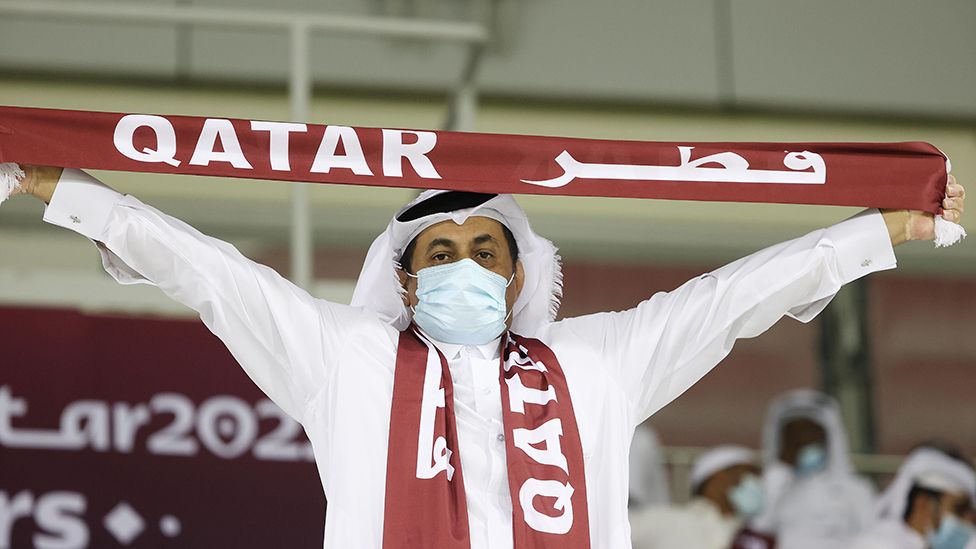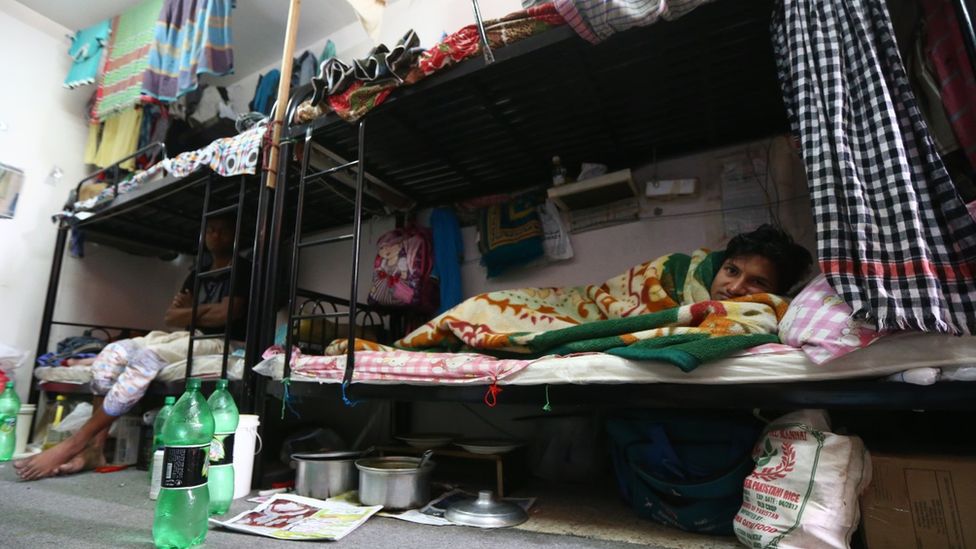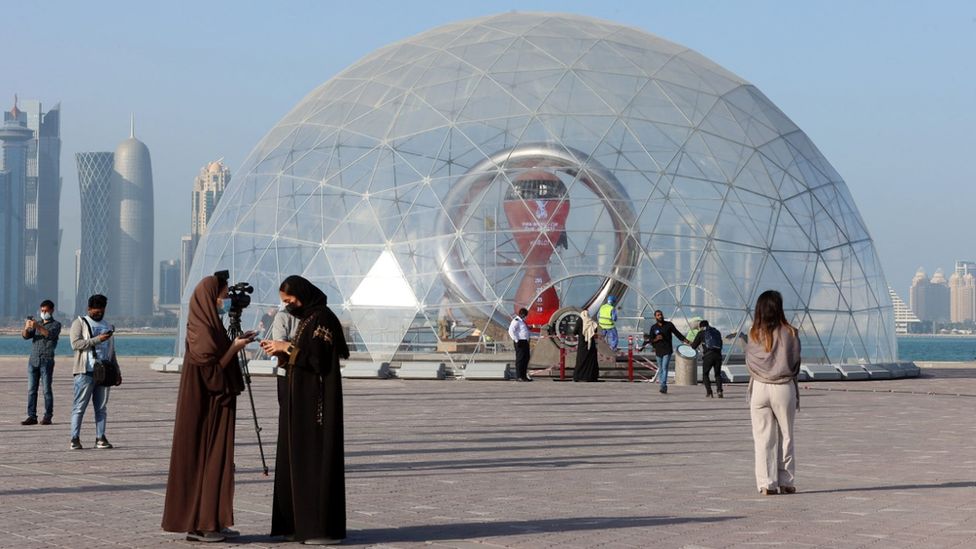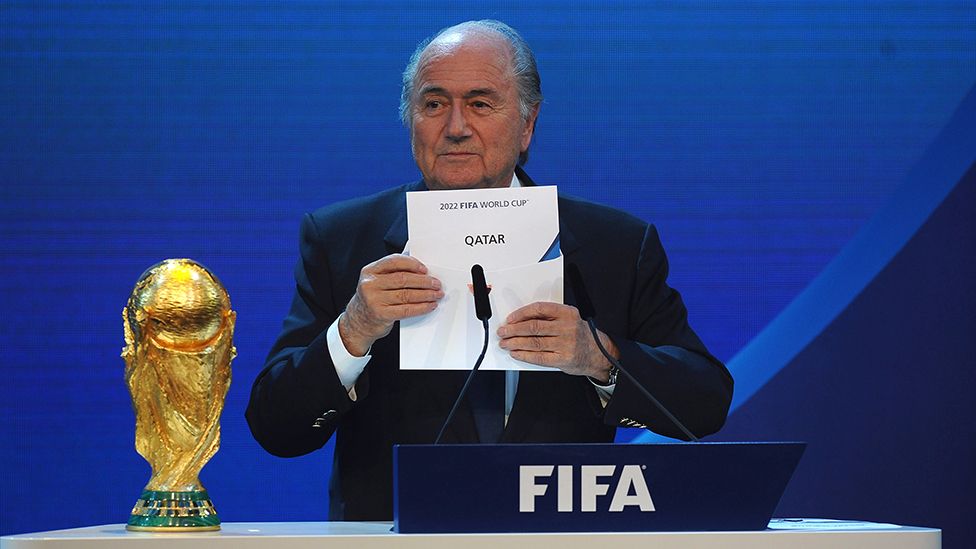World Cup 2022: How has Qatar treated stadium workers?
The draw for this year's football World Cup finals - in the Middle Eastern nation of Qatar - takes place on Friday 1 April.
It is most controversial World Cup ever, with questions about the way Qatar won the right to hold it, how it's treating workers building the stadiums, and whether it is even a suitable location.
Treatment of foreign workers
Qatar is building seven stadiums for the finals, a new airport, new metro and new roads.
The final will be played in a stadium, which is also staging nine other matches, that is the centrepiece of a new city.
But the state has attracted criticism for its treatment of the 30,000 migrant labourers working on the projects.
In 2016, human rights group Amnesty International accused Qatar of using forced labour. It said many workers were living in squalid accommodation, paying huge recruitment fees and had had wages withheld and passports confiscated.
Since 2017, the government has introduced measures to protect migrant labourers from working in excessive heat, limit their working hours and improve conditions in workers' camps.
However, campaign group Human Rights Watch said in a 2021 report that foreign workers were still suffering from "punitive and illegal wage deductions", as well as "months of unpaid wages for long hours of gruelling work".
Amnesty International also says that despite the abolition of the "kafala" - or sponsorship - system, which barred migrant workers from leaving their jobs without their employer's consent, pressure was still being put on employees.
A government spokesperson told the BBC: "Significant progress to ensure the reforms are effectively enforced has been made." It said the number of rule-breaking companies "will continue to decline as enforcement measures take hold".
How many workers have died?
In February 2021, the Guardian said 6,500 migrant workers from India, Pakistan, Nepal, Bangladesh and Sri Lanka had died in Qatar since it won its World Cup bid.
The deaths, which were reported by authorities in the five Asian countries, were not categorised by occupation or place or work. But the labour rights group FairSquare said it was likely that many of those who died had been working on World Cup infrastructure projects.
Qatar's government says the figures are an overestimate, because they include thousands of foreigners who died after living and working there for many years. It says many would have been working in jobs unrelated to the building industry.
Qatar says that between 2014 and 2020, there were 37 deaths among labourers building World Cup stadiums. It says 34 of those were "non-work related".
The International Labour Organization (ILO) says Qatar has not counted sudden and unexpected deaths amongst labourers. It says these include fatal heart attacks and respiratory failure caused by heatstroke recorded as being from"natural causes" rather than "work-related".
The ILO has compiled its own death figures from government-run hospitals and ambulance services in Qatar, covering casualties from all projects connected with the World Cup.
It says 50 workers died and more than 500 others were seriously injured in Qatar in 2021 alone, and another 37,600 suffered mild to moderate injuries.
The main causes of these deaths and injuries were falling from heights, road traffic accidents and falling objects.
How did Qatar come to host the World Cup?
Qatar 2022 has been controversial from the very moment it was announced by football's world governing body, Fifa, in 2010.
As a very small (if very rich) state with little footballing history, and no record of ever qualifying for the World Cup, it was a shock to many when Qatar beat competition from the US, Australia, South Korea and Japan.
The decision prompted allegations that Fifa officials had been bribed to award the World Cup to Qatar, although an independent investigation commissioned by Fifa later found no hard evidence of this.
Qatar denies allegations that it bought delegates' votes, but a corruption investigation by the French authorities is still ongoing, and in 2020 the US accused three Fifa officials of receiving payments.
Why is the Qatar World Cup happening in winter?
The World Cup tournament is usually held in June and July, but in Qatar average temperatures at that time of year are about 41C (106F) and can reach 50C (122F) - too hot to be outside safely, let alone play at least 90 minutes of football.
During the bidding process, Qatar promised advanced air-conditioning technology that would cool stadiums, training pitches and fan zones to 23C. However, in 2015 a decision was made by Fifa to hold the tournament in winter.
The World Cup kicks off on 21 November, and the final is on 18 December. This means it falls right in the middle of - and disrupts - the club football season for many countries.
The English Premier League, for instance, will not see any matches played between 13 November and 26 December.
To make up for the lost time, the 2022/2023 season will start a week earlier than normal and end a week later.




Comments
Post a Comment